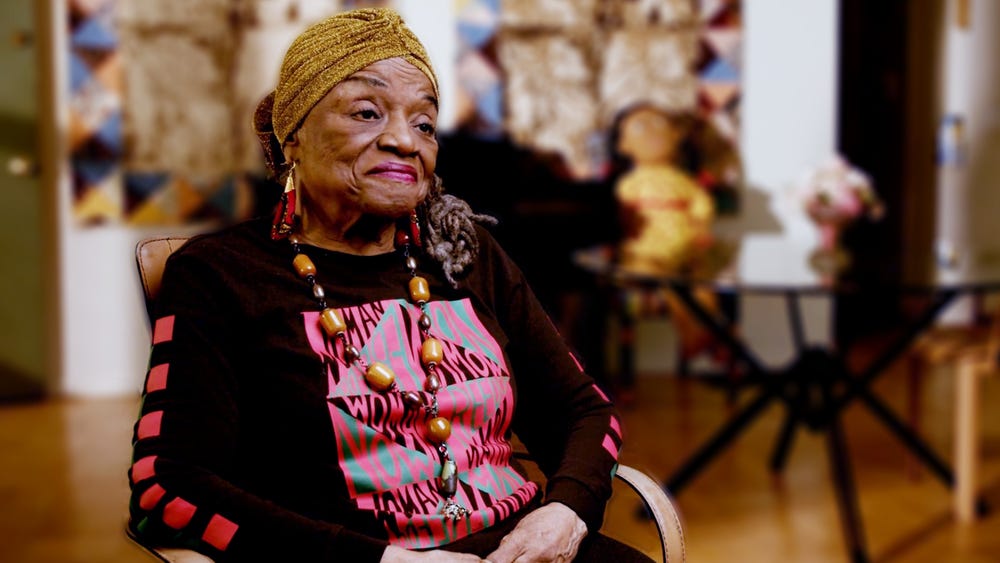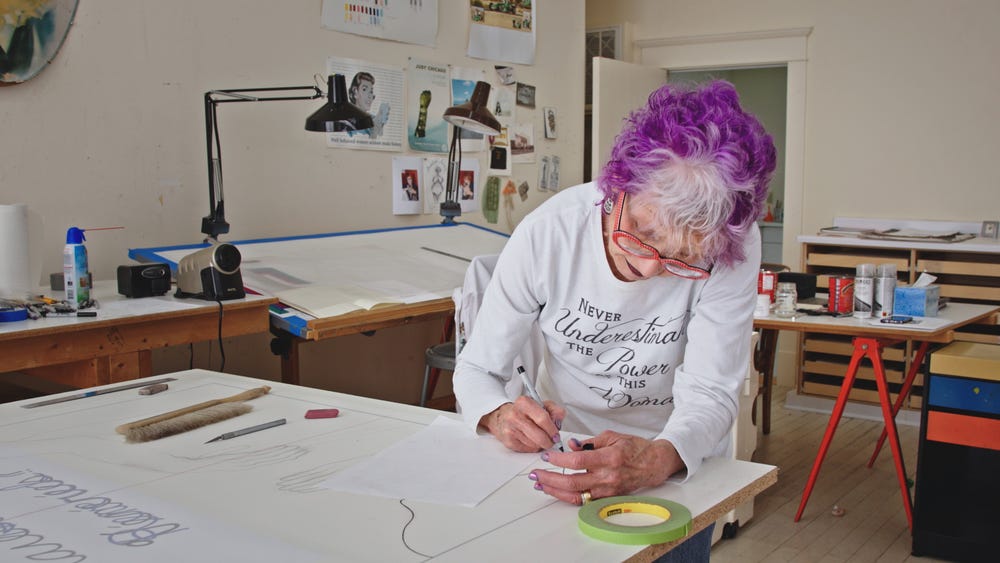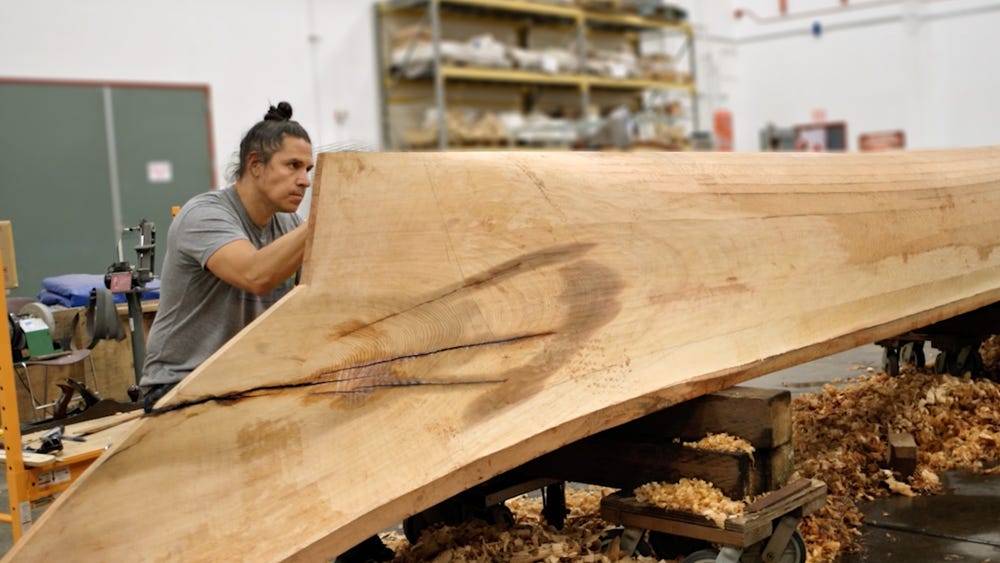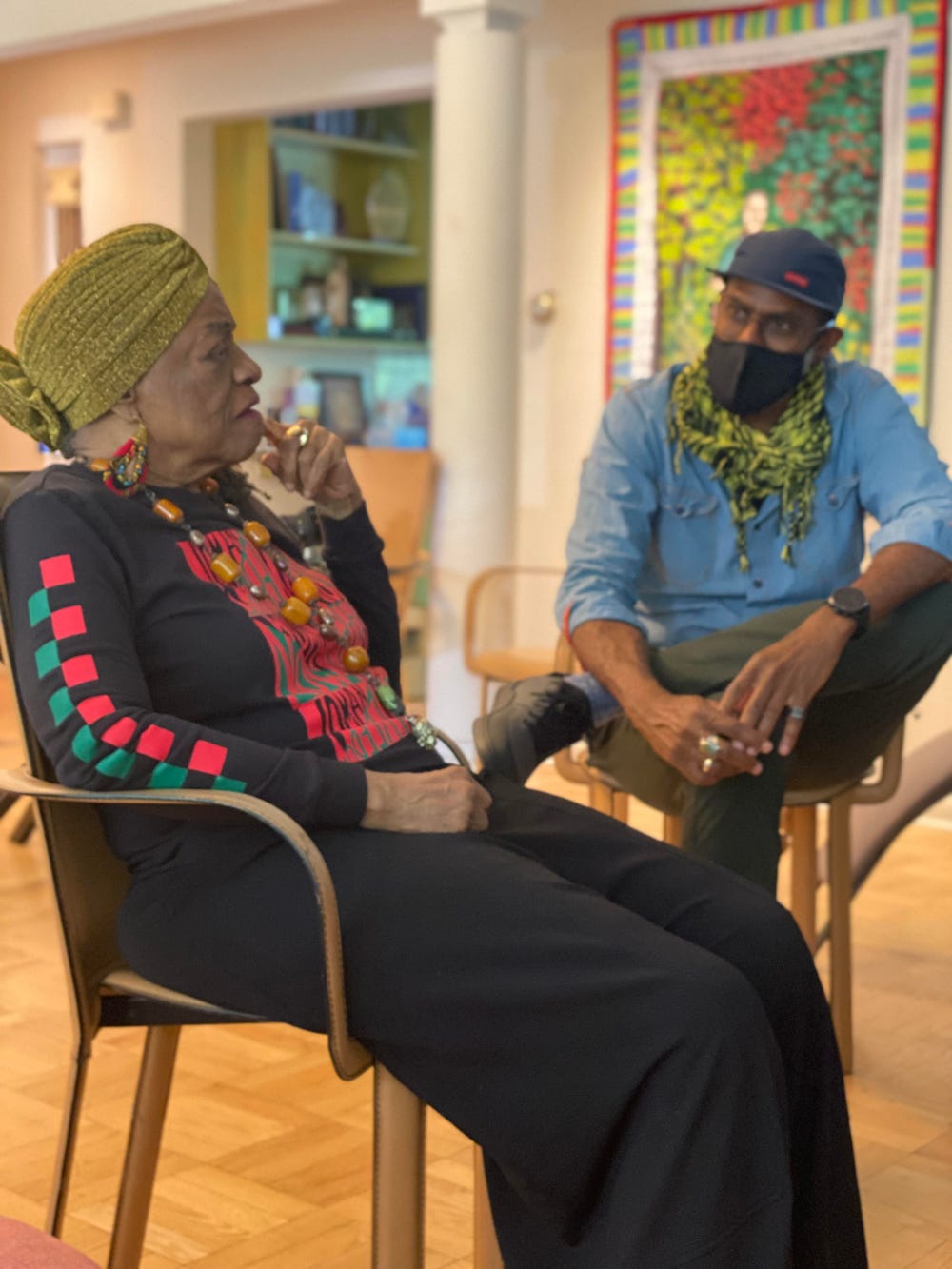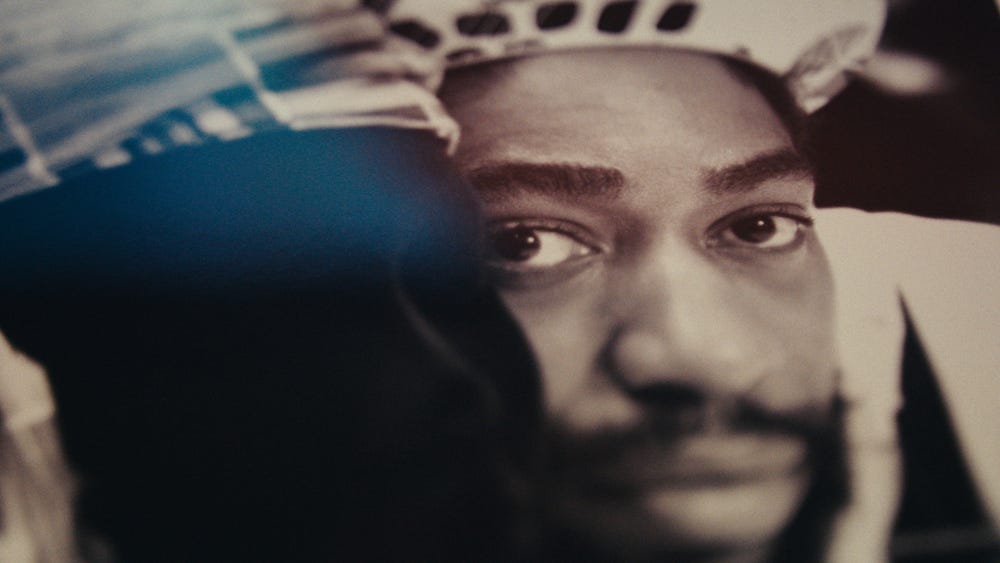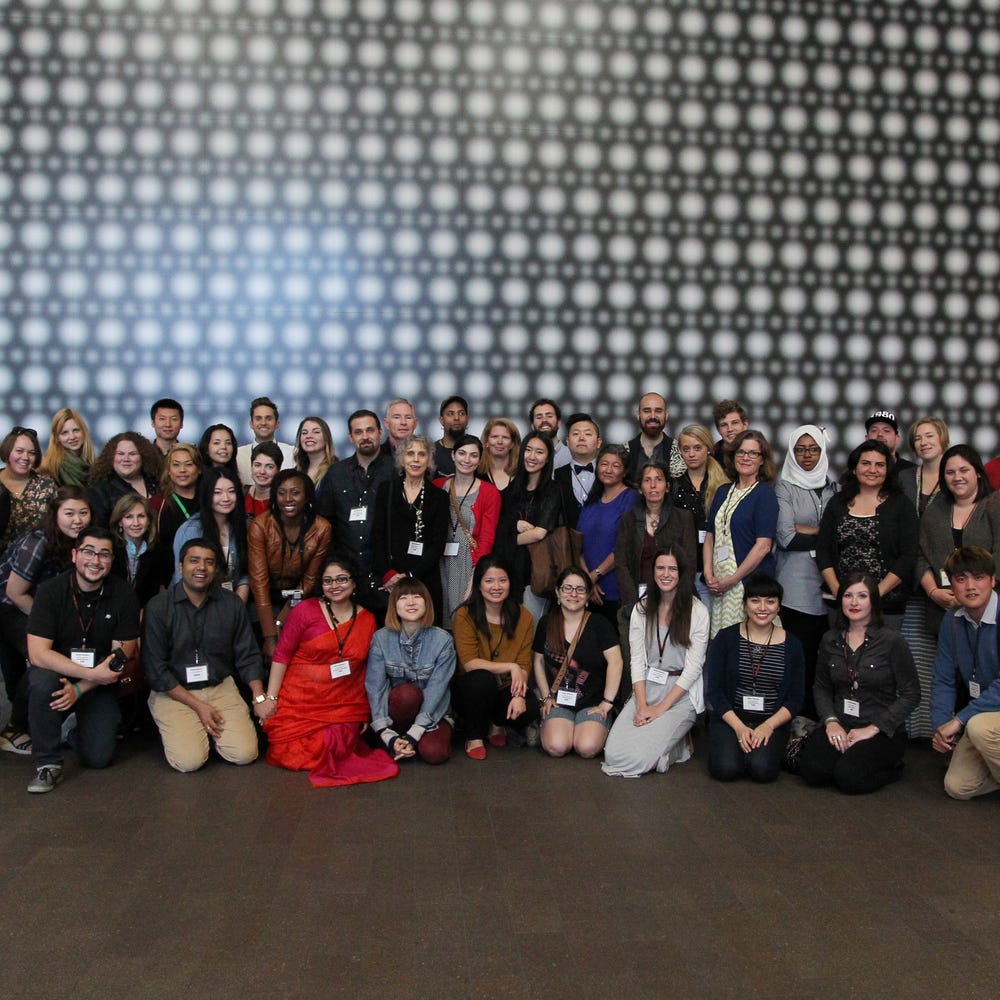Refocusing Film Productions with a DEIA Lens
By Patricia Buffa, director of digital strategy, and Khamisi Norwood, digital media producer
September 21, 2023
Faith Ringgold: American Story (still)
Representation is crucial in the film industry. We need to think critically about what stories we are telling and who is telling those stories. Movies have the power to develop a sense of belonging and empowerment in the audience, capture people’s attention, and prompt a reaction to what’s presented on screen.
Films featuring historically marginalized communities have become increasingly successful at the box office, according to the 2023 Hollywood Diversity Report by UCLA. Glass ceilings have been broken in the past few years, with Michelle Yeoh becoming the first Asian to win Best Actress at the Oscars in 2023, and CODA being honored with Best Picture in 2022. Yet, despite the diversification of casts and storylines in recent years, in 2022 only 21.6% of lead actors were people of color (although they represent more than 43% of the US population). Women accounted for only 38.6% of film leads (although they represent more than half of the US population). When it comes to director roles, there is even less representation. Taking a look at the media industry as a whole, publishers are still overwhelmingly hiring white people. In this environment, we thought about how we could make an impact, even at a small scale, in the films we produce around our exhibitions and collections at the Fine Arts Museums of San Francisco.
Patricia Buffa, director of digital strategy, on putting together the film team and establishing production pillars
While I was creating our in-house production team, and during the hiring process, it was important to me to advance the talents of individuals who didn’t represent the status quo of the film industry, so we could avoid defaulting to a white male perspective. Advancing candidates with diverse backgrounds was just the first step. To make sure our DEIA work was intentional and keep track of our progress, we created a DEIA production framework that considers four different pillars. We aim for every video to touch upon all four pillars, but we truthfully have only been able to leverage two or three at a time.
DEIA film production pillars
1. Whose story are we telling? (subject selection)
When selecting subjects for our video productions, we prioritize telling the stories of artists, culture bearers, and community members from historically underrepresented groups. Sixty percent of the short documentaries in our FAMSF presents series, which focuses on artists featured in our exhibitions, have been dedicated to women artists. Fifty percent of the series has centered Black artists. Finally, 10% of the content has focused on Asian artists, and another 10% has featured Native American perspectives. Beyond short documentaries, we have also created other formats, like Drag Art History, which highlights and supports the LGBTQ+ communities that are an essential part of San Francisco’s fabric and culture.
2. Who’s telling the story? (crew composition)
For each production, we strive to put together a diverse crew. The director’s role is clearly a crucial one, but by tapping into local and US-based talent pools, we try to make sure everyone, from the director of photography to the post-production editor, adds to the diversity of the crew. These behind-the-scenes contributors have a great impact on the way a story is told. For example, in Judy Chicago: Making Change, we tapped director Tim Marrinan and producer Lisa Remington, who brought together an all-women crew.
Judy Chicago: Making Change (still)
3. How are we developing the story? (narrative and editorial process)
We make sure that the people and the communities we present on-screen have a say in the production, from the ideation phase to the final edit. Our Alaska Native Art series highlights how important and successful it was to involve culture bearers throughout every step of the production and have them shape the narrative.
Navigating the land and sea (still), 2022. Produced in partnership with The Range
4. Who are we reaching with the story? (accessibility)
All of our videos are available for free on our YouTube channel and website. With viewers who are Deaf or hard of hearing in mind, we provide captions for all our video productions. While we are currently only able to provide captions in English, going forward, we aim to expand access to better serve communities who don’t speak English or for whom English is not their first language.
Khamisi Norwood, digital media producer, on putting our DEIA pillars into practice in two FAMSF Presents productions
Giving a diverse group of people the opportunity to tell their own stories is paramount. We can look at Spike Lee’s masterpiece Malcom X (1992) as an example of a film that should and could have only been directed by a Black person. I’d like to highlight two of our short documentary projects as examples of how we apply our DEIA pillars to our productions.
Faith Ringgold: American Story
Faith Ringgold: American Story tells the story of Black artist and activist Faith Ringgold, who has dedicated her life and artistic practice to amplifying the struggle for justice and equity for Black people in the United States, with particular care for Black women. To tell this story, we sought out a Black director, cinematographer, archivist, and even production assistant.
Faith Ringgold and Khamisi Norwood behind the scenes at the Faith Ringgold: American Story shoot
Our director, LeRoy Lee, was a perfect fit, as he is from New Jersey, Faith Ringgold’s adopted state. He also studied Ringgold’s work while attending Arts High School. Based on LeRoy’s body of work, we could see he could tell a great story, the cornerstone of any successful film. Our cinematographer, Kirby Griffin, another key role in the filmmaking process, was chosen for his ability to create beautiful images, as well as his understanding of visual storytelling.
The role of an archivist is an important one when producing a documentary. We followed Lee’s suggestion and hired Yvonne M. Shirley, also a New Jersey native familiar with Ringgold’s life and accomplishments. She was instrumental in sourcing appropriate archival footage to help further the narrative.
Patrick Kelly: The American in Paris
Patrick Kelly: The American In Paris celebrates the life, career, and legacy of fashion designer Patrick Kelly through the designer’s own voice, as captured in vintage footage, as well as the accounts of his friends and close collaborators.
Patrick Kelly: The American in Paris (still)
Our first order of business during the development phase was to find a director with a high level of storytelling capability coupled with cultural sensitivity. We found these qualities in Rashidi Harper, who has a rich background in documentary production. Rashidi’s treatment offered a bold, refined visual style, and included a personal story about his discovery of Kelly’s work as a youth. The final film truly captured Kelly’s journey, one that proves grit, southern charm, and ingenuity can create a life as big as you can imagine.
Our Patrick Kelly film was an Honoree at the 2022 Webby Awards, considered the Oscars of the internet. We are honored that it was added to the Fashion and Race database, an online platform offering tools that expand the narrative of fashion history and challenge misrepresentation within the fashion system.
Fast forward
Embracing diversity is a strategic imperative for organizations to adapt, grow, and excel in an ever-changing world. All of our projects have reflected the Museums’ commitment to diversity and inclusion. We are proud to have contributed to making the Museums a more responsive, relevant, current, and well-rounded place.
That being said, our work is not done. It’s an ongoing process. We will build upon our established pillars, with a continued focus on diversity across the entire spectrum of our productions. This is the work we are committed to continuing.
